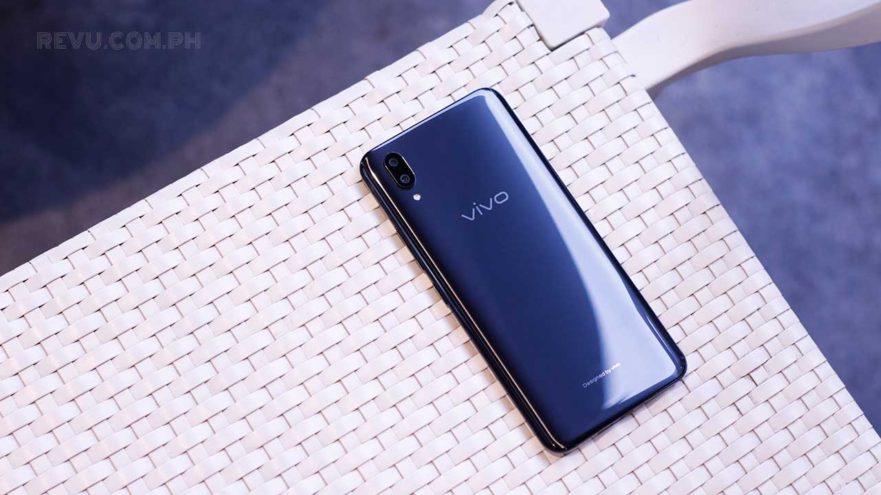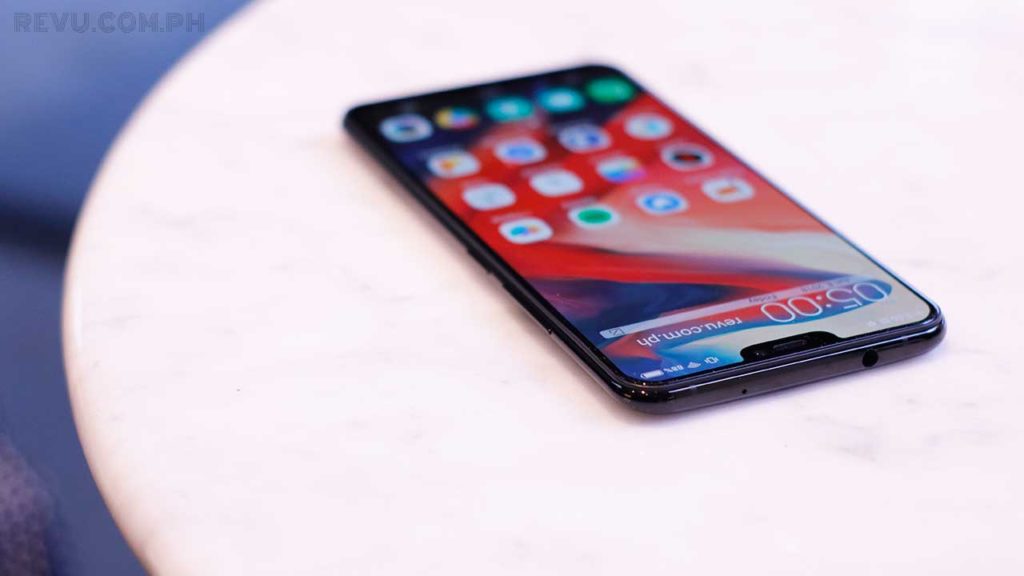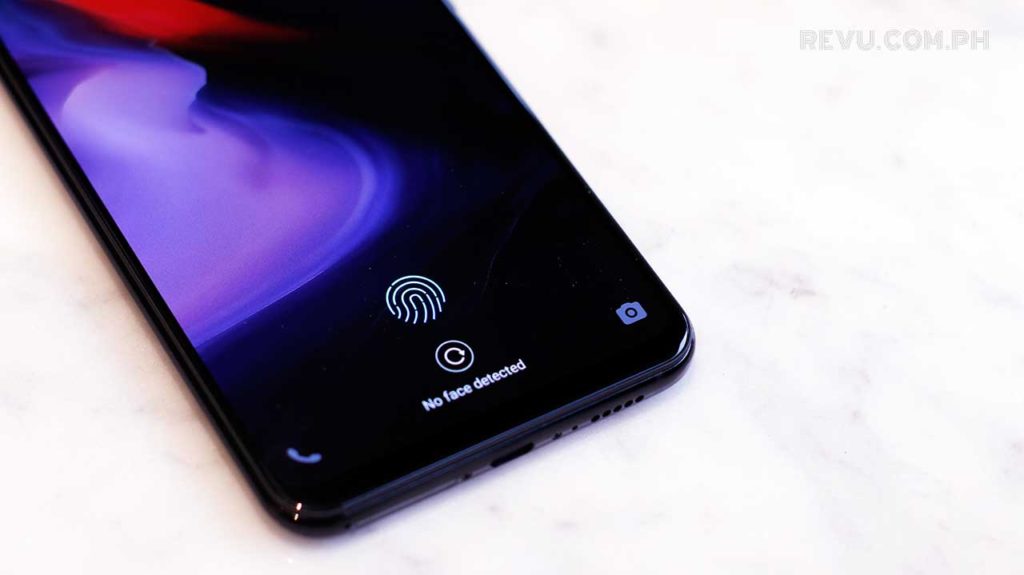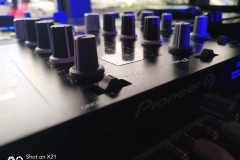Chinese phone maker Vivo has beaten Apple and Samsung in their quest to hide the fingerprint reader under the screen. The Vivo X21 has been formally unveiled at local retail in the Philippines, and it’s the first device in the country to have an in-display sensor for biometric authentication.
And while that alone should be enough to turn heads and draw crowds, the rest of the phone actually holds up pretty well to its closest competition. Is it a value-for-money offering like some of Vivo’s earlier products? The shortest answer is no. But we don’t think it’s priced too high either, especially considering its nascent headline feature.
SEE ALSO: Vivo NEX takes us a step closer to an all-screen future
Locally, the Vivo X21 will carry a price tag of P29,999, which translates to roughly $561. The phone is already available at select Vivo stores in the Philippines.
On the outside
Taking one look at the Vivo X21, we immediately noticed the similarities between this phone and the Vivo V9. If you’re not familiar with the latter, the V9 touts a notch display incorporated into a rounded back cover with a glass-like finish, allowing it to sit a little more comfortably in the hand.
The main camera is supported by a secondary camera for depth detection in Portrait Mode. The X21’s two rear cameras are also lined up vertically, and an LED flash module is placed below them. Its physical buttons feel nice and tactile; they’re located on the right-hand side where we want them to be.
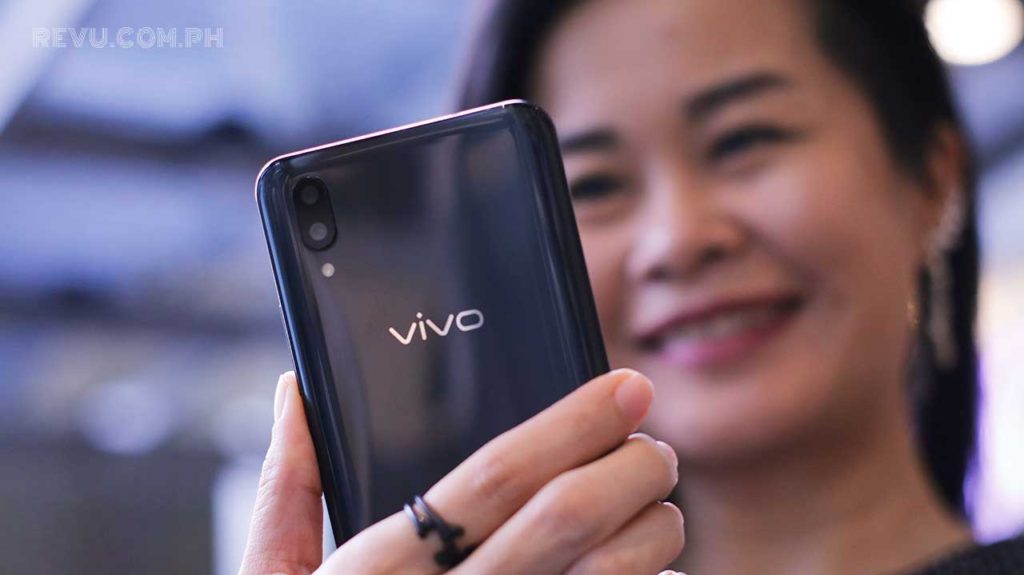
Like on the Vivo V9, the Vivo X21’s two rear cameras are also lined up vertically, and an LED flash module is placed below them.
There are, of course, a few notable differences that could push you toward the more sophisticated and expensive Vivo handset. Physically, the X21, with its rear glass panel and metal frame, feels a lot more substantial than the V9. It’s reassuring to hold, and there are no creaks or weak points in the unibody construction. That being said, the X21 is the most premium-feeling Vivo product we’ve ever held — and it’s not even close.
Sound coming from the mono speaker system at the bottom gets satisfyingly loud, though it’s not as detailed as on some other phones. For the absolute best listening experience the Vivo X21 can offer, however, we recommend pairing it with headphones that support high-resolution audio. Wired or wireless, this phone (thankfully) does not discriminate, because there’s a headphone jack up top.
As far as the hardware is concerned, our only gripe is that it still rocks a microUSB connector instead of the newer, reversible Type-C port. But despite that, fast charging is available for people who top up their smartphones with greater frequency. We found that the 18-watt wall adapter included in the packaging can bring the phone to 50-percent charge in under an hour.
The future of unlocking the smartphone
The screen on the Vivo X21 officially comes in at 6.28 inches, with a resolution of 2,280 x 1,080 for a pixel density of 402 dots per inch and a taller aspect ratio of 19:9. It uses AMOLED technology, so it’s pretty much a delight to look at, even in the bright outdoors. Contrast is punchy, and colors appear vibrant without coming across as too saturated or processed. The blacks are deep, too.
Vivo minimized the bezels on the front, which results in a remarkably high screen-to-body ratio of 90.3 percent and a more immersive experience for those who spend hours every day watching videos and playing games on their mobile device.
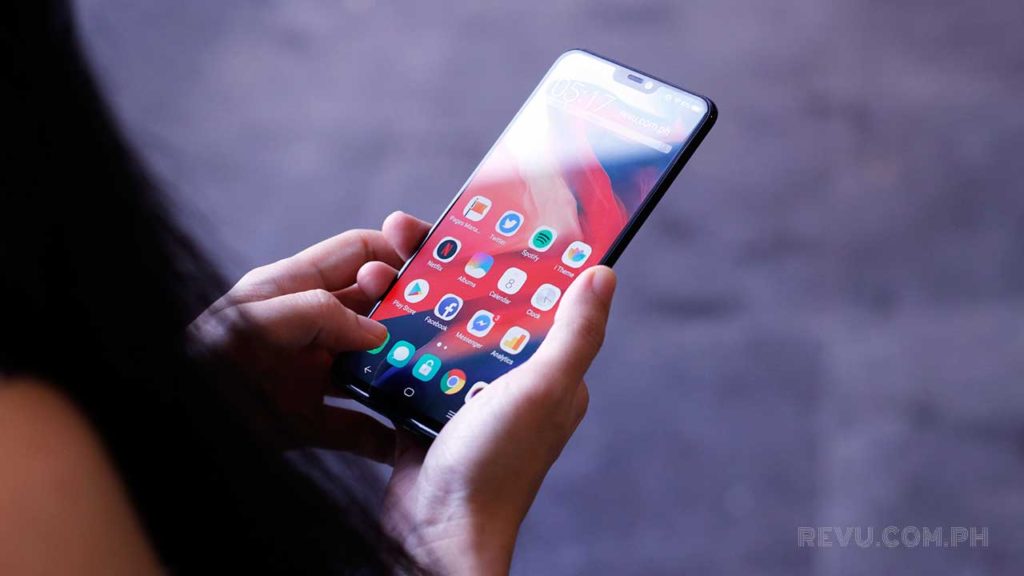
Vivo minimized the bezels on the X21’s front, which results in a remarkably high screen-to-body ratio of 90.3 percent.
The use of an OLED screen is also agreeable in that it’s particularly well-suited to the X21’s most distinguishing feature: in-display fingerprint recognition. The optical sensor housed underneath the panel to scan and identify fingerprints works about as good as its capacitive counterpart though, there are areas for improvement, to be sure.
A short explainer on how it works: A small patch at the lower section of the display brightens up to bounce off light from your finger’s surface to the optical sensor. The reflected light carries your fingerprint data to the sensor, which then matches it with data stored in the phone’s memory. If it matches, the device unlocks.
Using the under-display fingerprint sensor
This all happens in a fraction of a second, and without the user knowing about it. Still, it’s definitely a step slower than the fingerprint- and face-unlock systems on most high-end smartphones we’ve tried. The speed, we think, is tolerable. It shouldn’t be a problem unless you’re in direct sunlight, and it’s difficult to see where you’re supposed to press your finger on the screen.
READ ALSO: Official: Vivo X20 Plus UD, 1st phone with in-display fingerprint sensor
One possible issue is that the optical scanner won’t work well with glass screen protectors. The Vivo X21 does come with a pre-installed plastic film, for protection against scratches, so you might want to stick with that one for a while. We honestly don’t apply any extra protection on our phone displays, but some of you might feel differently.
As impressive as it already is, Vivo’s in-display fingerprint unlock is a first-generation product, far from perfect. But it’s a darn good first try.
As most other Chinese smartphones today, the X21 also has face unlocking onboard. It beams infrared light to scan your face more accurately. It works incredibly fast in different lighting conditions, including pitch-black darkness. Plus, we weren’t able to fool it with a picture. It won’t override fingerprint authentication unless you press the wake button on the side of the device.
Camera performance
On the imaging side of things, the Vivo X21 comes with a dual-lens setup at the back and a single solution for selfies. The 12-megapixel main camera uses dual-pixel technology, which delivers big improvements to auto-focus performance in any lighting situation. Additionally, it employs a secondary sensor to help with taking portrait-style shots, while the f/1.8 aperture lens should make for brighter snaps in low light.
[sciba leftsrc=”https://www.revu.com.ph/wp-content/uploads/2018/06/Vivo-X21-sample-selfie-price-specs-Revu-Philippines-bs.jpg” leftlabel=”Auto” rightsrc=”https://www.revu.com.ph/wp-content/uploads/2018/06/Vivo-X21-sample-selfie-portrait-bokeh-price-specs-Revu-Philippines-bs.jpg” rightlabel=”Portrait Mode” mode=”horizontal” width=””]Selfies captured on the Vivo X21: Auto vs Portrait Mode (with bokeh effect)
Outdoors in daylight, the rear camera performs well. It generally produces detailed results with excellent color balance and saturation. In Portrait Mode, the Vivo X21 does a serviceable job of maintaining details in the foreground while objects in the distance are blurred pretty dramatically. We didn’t notice a huge drop in quality when shooting at higher ISO levels, which tend to add a lot of grain in the image. Most of our night shots turned out fine.
Photos taken with the Vivo X21
The selfie camera is a single 12-megapixel sensor behind an f/2.0 lens. It takes sharp, true-to-source images using the default setting. But if you’d rather have beautified selfies with the help of artificial intelligence or AI, or ones with AR stickers planted on your face to make you look silly, that’s doable on the X21’s native camera app as well.
Selfies (with AR stickers and without) shot on the Vivo X21
Under the hood
A Qualcomm Snapdragon 660 processor sits inside the Vivo X21. To give you the basics, it features eight high-performance CPU cores clocked up to 2.2GHz, 6GB RAM, and Adreno 512 GPU for up to 30 percent higher graphics performance compared to older generations. The internal storage goes up to 128GB and can be expanded using an SD card of up to 256GB capacity.
READ ALSO: New NBA 2K Mobile game is a lot like NBA 2K18, but free
But how well do these specs translate to the real world? After using the handset for weeks, we think the X21 is right up there with some of the Android flagships released in previous years.
It’s snappy, responsive, intuitive to use, and you get good peak performance when needed. While there are faster options out there for gaming — cue the Snapdragon 845 and 835 — the Snapdragon 660 doesn’t disappoint under heavier, graphics-intensive loads. Vivo’s Funtouch OS 4.0 is layered on top of Android 8.1 Oreo and has been well-optimized for the hardware it’s running on.
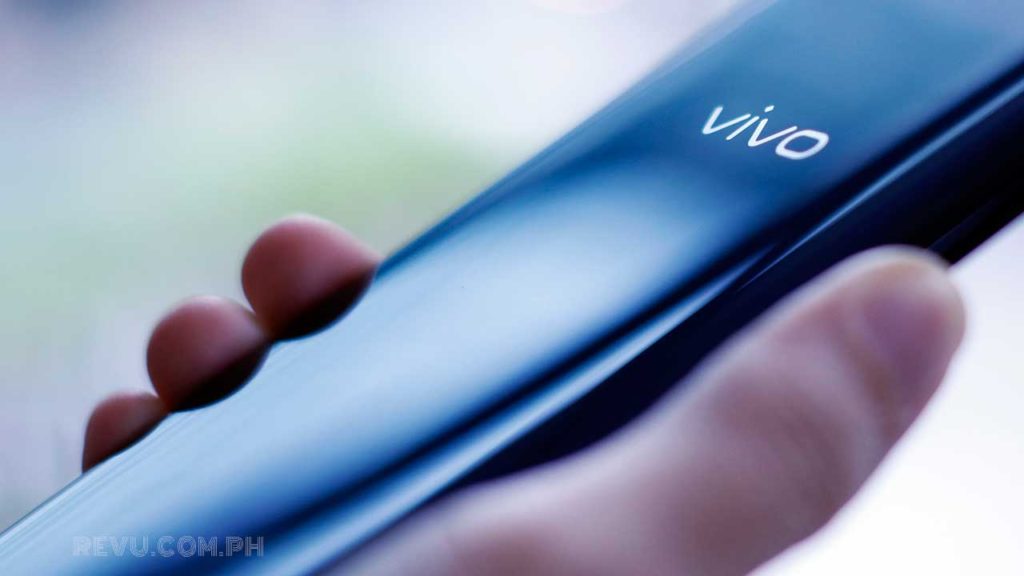
The Vivo X21 is snappy, responsive, intuitive to use… and you get good peak performance when needed.
Drawing from Apple’s iOS, the new interface makes it easy to turn the controls on and off as you need them. Vivo has included gesture navigation as an alternative to tapping icons on the navigation bar. It works well enough that we can imagine plenty of users embracing this option for operating the device. The downside is that specific UI elements in the notifications shade look weird, and there are features from stock Android Oreo that have been jettisoned.
SEE ALSO: NBA 2K18 for Android and iOS: Can your phone run it?
The 3,200mAh battery won’t jump off the page at you, but it typically manages to stretch the battery life of the X21 to a solid day and a half. Playing heavier games like NBA 2K18 (high settings) and PUBG Mobile (medium to high settings) doesn’t drain the power supply too quickly. Neither does binging content on Netflix and YouTube.
The 3,200mAh battery typically manages to stretch the battery life of the Vivo X21 to a solid day and a half. Playing heavier games like NBA 2K18 (high settings) and PUBG Mobile (medium to high settings) doesn’t drain the power supply too quickly. Neither does binging content on Netflix and YouTube.
Final thoughts
The Vivo X21 is a solid all-rounder with a cool party trick literally tucked underneath the display. It introduces the country of over 30 million smartphone users to a new and convenient way to unlock their device while maximizing the screen real estate of something usually held in one hand and slipped in a pocket. It’s fast, a joy to use, offers reliable mileage, and outfitted with a good set of cameras, too.
READ ALSO: OPPO Find X vs Vivo NEX: Specs, price comparison
There are obviously cheaper models carrying a Snapdragon 660 elsewhere. And the next-gen Snapdragon 710 should be here in a couple of months. MediaTek will continue to compete head-on with Qualcomm in the performance stakes this year.
Explicitly, what we’re trying to say is that if you’re seriously considering the Vivo X21, one way to appreciate it is to take a step back and look at it as a whole, as a sum of its parts. You might be surprised to see a phone worth the asking price. Or maybe not. The Philippine market is brimming with fantastic options.
Vivo X21 specs
- Face unlock (3D facial scanner)
- Fingerprint reader (in-display)
- 6.28-inch AMOLED display, 2,280 x 1,080 resolution (19:9)
- Octa-core Qualcomm Snapdragon 660 processor
- 6GB RAM
- 128GB expandable storage
- Dual 12- and 5-megapixel rear cameras with LED flash
- 12-megapixel front camera
- 3,200mAh battery
- Android 8.1 Oreo
Share this Post


